Introduction
Renting a tiller can be a game-changer for those in need of efficient and cost-effective equipment for their agricultural projects. With a wide range of benefits, renting provides a practical solution that addresses various challenges faced by users. The financial advantage is prominent, as it eliminates the need for a hefty initial investment, allowing users to leverage the equipment for a fraction of the purchase cost.
Additionally, renting offers flexibility, enabling users to select the most up-to-date models that best suit their needs. This adaptability is crucial in a market where technological advancements are continuous. Renting also addresses the market gap for temporary equipment usage, supporting sustainability efforts within the industry.
Furthermore, rental companies offer expert advice and ongoing support, ensuring users have the most efficient and effective tiller for their specific needs. By renting a tiller, users can optimize productivity, save costs, and contribute to a sustainable approach in the agricultural sector.
Benefits of Renting a Tiller
Opting to rent a tiller can lead to improved productivity and efficiency, with several compelling benefits for users. The financial advantage is prominent, as renting a tiller circumvents the need for a hefty initial investment, enabling users to leverage the equipment for a fraction of the purchase cost. This cost-efficiency is particularly beneficial for those who require the tiller for short-term projects or seasonal work.
Moreover, the flexibility provided by renting is invaluable. Instead of committing to a single piece of equipment, users have the opportunity to select the most up-to-date models that best suit their current needs. This adaptability is crucial in a market where technological advancements are continuous, and having access to the latest equipment can significantly impact project outcomes.
Renting also addresses a market gap for individuals and businesses that require equipment for temporary usage, making it an impractical choice to purchase. The rental industry has seen a surge, driven by a focus on practicality and sustainability. By renting, users are participating in a form of shared economy, which can contribute to reducing the environmental impact associated with manufacturing and disposing of equipment.
The rental costs for tools and equipment such as tillers can range significantly, with factors like the item's type, quality, and rental duration playing a role. Estimates suggest that basic power tools can cost around $30 to $50 per day to rent. For larger equipment, the prices increase, but it remains a cost-effective solution compared to outright purchasing or hiring professionals with their own gear.
In summary, renting a tiller presents a practical, cost-effective, and flexible solution for those in need of such equipment on a non-permanent basis. It allows for the utilization of the latest technology without the financial burden of ownership, all while supporting sustainability efforts within the industry.
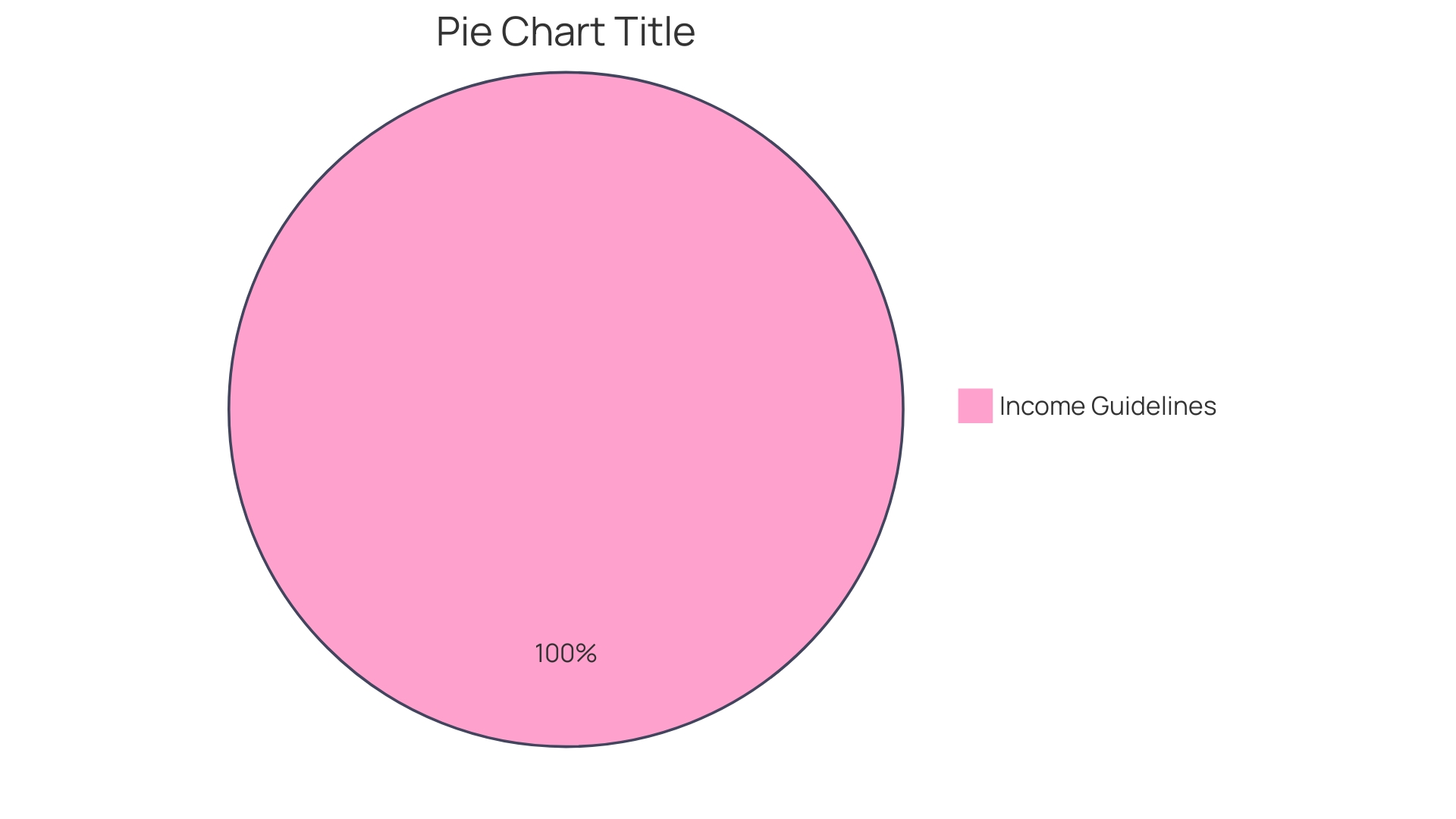
Cost savings
When considering the acquisition of a tiller, the financial implications extend far beyond the initial purchase cost. It's essential to evaluate the total cost of ownership, which includes ongoing maintenance and potential storage expenses. Many individuals overlook these aspects, focusing solely on the purchase price.
However, by renting a tiller, you can sidestep these long-term financial commitments. Renting not only circumvents the initial outlay but also relieves you of the responsibility for upkeep, which can be particularly advantageous if the tiller is only required for a short-term project. Moreover, in a time where flexibility is key and the landscape of homeownership is shifting, with two-thirds of Americans owning their homes as per the U.S. Census Bureau, the decision to rent versus buy is a significant one.
Renting equipment provides a level of adaptability that aligns with the dynamic needs of today's projects and personal goals.
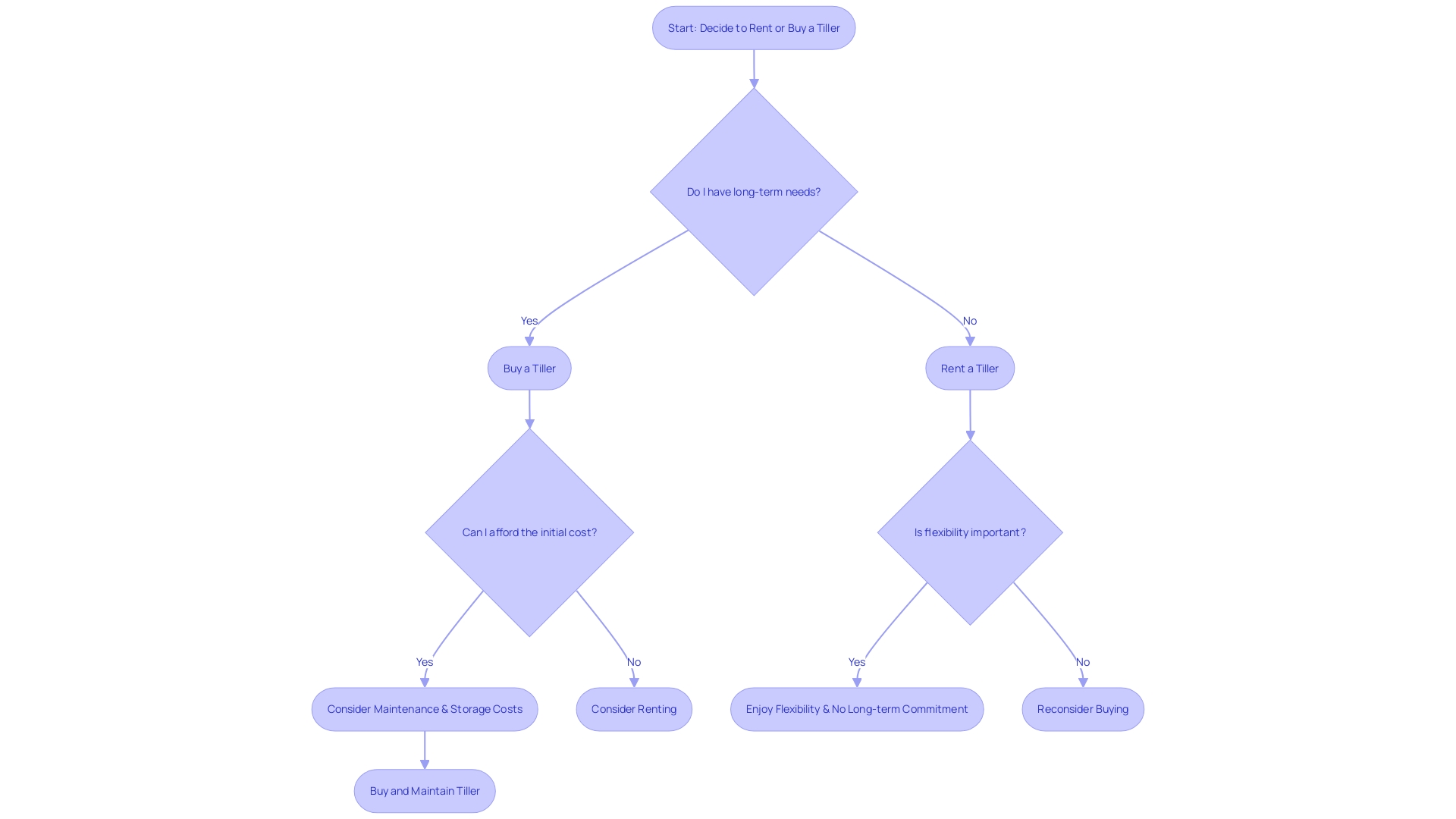
Wide range of options
Opting to rent a tiller can be a game-changer for agricultural productivity, especially considering the global food crisis looming on the horizon. With a variety of models at your disposal, you can pinpoint the tiller that aligns perfectly with the scope of your project, be it a modest garden task or an extensive landscaping endeavor. This approach is not just about matching the tool to the job; it’s about embracing cutting-edge efficiency.
Think of it as deploying the right set of wheels—a tiller tailored to your land's contours and crops' needs can do wonders, mirroring the way autonomous technology is revolutionizing farming by boosting efficiency. Just as autonomous tractors are elevating farming operations to new heights of productivity, the right rented tiller can escalate your agricultural output without the strings of ownership. It’s a strategic move that aligns with the sharp insights recommended by agricultural experts, ensuring you're not just tilling soil, but also cultivating progress for tomorrow's harvests.
Expert advice and support
Selecting the right tiller for your landscaping project can often be a daunting task, particularly with the multitude of models available, each with its own set of features and capabilities. Rental companies are stepping in to bridge this knowledge gap, offering not just the equipment itself but also the expert guidance necessary to choose the most suitable option for your specific needs. Thanks to the staff's expertise, you can rest assured that the tiller you rent will be the most efficient and effective for your project, avoiding the costly mistake of selecting a tool that doesn't meet your requirements.
Moreover, rental companies understand that support doesn't end at the checkout counter. They provide ongoing assistance throughout your rental period to swiftly address any issues or answer questions that may arise. This commitment to customer service ensures that your project continues smoothly, without the downtime that could jeopardize your productivity and deadlines.
In a broader context, the rental model aligns perfectly with the principles of sustainability and efficiency. As evidenced by the growing popularity of 'libraries of things' in urban centers, such as the London-based Library of Things, the idea of borrowing versus owning is gaining traction. It's not only a financially prudent choice but also a practical one, minimizing waste and maximizing the use of resources.
In the agricultural sector, the use of autonomous technology is a testament to the power of rental and lease solutions to address critical challenges, such as labor shortages and the looming global food crisis. For example, Blue White Robotics offers a vehicle-agnostic kit that can be added to existing tractors to enable autonomous operations. This innovative solution demonstrates how renting specialized equipment can enhance productivity and resilience in farming.
From the efficiency of managing an entire fleet with a single operator to the cost savings of renting tools for short-term use, the rental industry is proving to be an indispensable ally for both consumers and businesses. Whether it's addressing the housing shortage through pre-approved home designs or enabling farmers to meet increasing production demands, the rental market is at the forefront of providing practical and sustainable solutions in a fast-paced world.
Convenience and flexibility
The strategic use of rental tools and machinery like tillers has become an innovative solution for diverse projects ranging from home renovations to landscape maintenance. Take, for example, the renovation of a historic 19th-century house, which required extensive work but was approached with a commitment to preserve as much of the original structure as possible. Renting the necessary equipment for such a project, rather than purchasing it, offers a substantial cost-saving advantage, particularly when these tools are needed only for the duration of the renovation.
Similarly, when invasive species threaten to overrun a garden, the clever solution of renting goats to manage the weeds represents a shift towards environmentally friendly and efficient land management. This not only aligns with the push towards sustainable practices but also demonstrates the versatility of rental services.
The rental industry's growth reflects this trend, offering a practical and economical option for those who need equipment on a temporary basis. The market's expansion is a testament to the increasing preference for renting over purchasing, a move that is both cost-efficient and aligned with the growing emphasis on sustainability.
Moreover, the advent of digital platforms like Digital Source is transforming how businesses manage their supply chains, providing a way to access necessary parts quickly, thereby reducing downtime and associated costs. Using such services to rent or print the required parts on-demand is an example of how the rental market is adapting to the needs of modern industry.
For those managing construction projects, landscaping jobs, or event planning tasks, renting tools and machinery is not just a matter of convenience; it's a strategic decision that can impact the overall efficiency and success of a project. The flexibility to rent for the exact time needed—hours, days, or weeks—and the benefit of having transportation and delivery handled by the rental company, saves valuable time and effort, allowing project managers to stay focused on meeting their deadlines and managing budgets effectively.
How to Choose the Right Tiller for Your Needs
When selecting a tiller for your agricultural projects, considering the adaptability to future advancements and community benefits is as important as the immediate functionality. Look for tillers that are designed to be versatile and cater to evolving market demands and standards. This proactive approach ensures the longevity of value chains beyond the lifespan of the project.
Furthermore, it contributes to sustained community development, which echoes the ethos of leading-edge project investors aiming for long-term quality and sustainability.
Incorporating edimentals in your tiller choice can be a smart move, as these plants serve dual purposes in the garden, offering both aesthetic appeal and edibility. By choosing a tiller that supports the growth of such versatile plants, you can enhance your garden's design while enjoying lower maintenance and diverse harvest times.
Regarding the broader agricultural landscape, real-time updates on technological advancements and market trends are crucial. Your tiller should help you stay informed and make smart decisions that lead to profitable farming. By staying current, you can ensure your tiller choice aligns with the latest crop management techniques and contributes to the overall success of your agricultural business.
Statistics indicate that efficient irrigation monitoring and scheduling can significantly reduce operating costs, making it a key factor to consider when choosing a tiller. Look for equipment that can integrate with systems that automate and schedule irrigation events, ultimately saving you money with a money-back guarantee on performance.
Finally, consider expert insights, such as those from the equipment financing industry, which suggest that waiting for rate drops or predicting recessions is less impactful than investing in necessary, revenue-driving equipment. A tiller that meets your current needs and has the potential to drive revenue should be prioritized over speculative market waiting games.
Project scope and size
Selecting the right tiller for your agricultural needs is essential to maximize productivity and efficiency. For modest tasks or smaller plots, a mini or compact tiller often suffices, providing both maneuverability and the necessary power to break up the soil. On the contrary, challenging soil conditions or expansive areas necessitate a robust solution such as a rear-tine or front-tine tiller, which offers greater power and depth of cultivation.
In the context of an evolving agricultural landscape, where a rising global population and a diminishing labor force pose significant challenges, the importance of choosing appropriate equipment cannot be overstated. By leveraging advanced technology, as seen in autonomous farming solutions like those developed by Blue White Robotics, one operator can handle a fleet of tractors, thereby optimizing field operations with no downtime. This approach not only addresses labor shortages but also significantly boosts the productivity of agricultural activities.
As the construction industry anticipates a 15% growth over the next couple of years despite economic tribulations, similar principles of efficiency and productivity apply. Choosing the right machinery, like selecting the ideal tiller, can lead to more resilient farming and construction practices. This is critical in a time when cautious investment decisions are the norm, and the demand for housing continues to push the industry forward.
When considering equipment, it's essential to research and compare different brands and models, factoring in durability, reliability, and support services. The total cost of ownership, including maintenance and the availability of parts, is a crucial consideration. Moreover, keeping abreast of material price trends can inform budgeting decisions, ensuring cost-effectiveness in equipment acquisition.
In summary, whether tending to crops or embarking on a construction project, understanding the scale of your endeavor and selecting the right machinery are pivotal steps in driving productivity. With the right tools in hand, you can tackle any project with confidence, knowing that your efficiency is not compromised.
Soil type and condition
Selecting the right tiller for your project is not just about the performance, but also about the health of your soil. Soil is the foundation of any project, whether you're cultivating a garden or preparing a landscape. It's a living resource with a direct impact on crop resilience and productivity.
Healthy soil not only supports robust plant growth but also contributes to mitigating climate change by reducing carbon emissions.
Understanding your soil's current condition is the first step towards making an informed choice for tillage equipment. Soil testing reveals the levels of nutrients and organic matter, as well as the pH balance, which is vital for selecting a tiller that complements your soil's characteristics. Whether you're dealing with clay, loamy, or sandy soils, each type requires a specific approach to tillage to maintain soil health and structure.
For example, no-till practices, which protect the soil by leaving residue on the surface to minimize disturbance, are gaining recognition for their environmental benefits and cost-effectiveness. The technology has evolved to a point where, with the right tiller, farmers and gardeners can achieve better yield while also conserving the soil's integrity.
A tiller optimized for your soil type enhances water retention, nutrient content, and the overall soil structure. This approach not only ensures that your tiller operates efficiently but also contributes to long-term soil health, which is an 'impure' public good—offering both private benefits to the landowner and public environmental benefits.
When selecting tillage machinery, consider the long-term implications of your choice on soil health and productivity. With the right equipment, you can foster a sustainable environment that supports both your project's immediate needs and the ongoing vitality of the soil ecosystem.
Ease of use
Selecting the right tiller for your agricultural needs is more than just a convenience—it's a strategic decision that can affect your overall productivity. The right tiller, with features like adjustable handles and ergonomic design, helps to streamline operations and reduce the physical strain on the user, which is crucial given the escalating demands on the agricultural sector. The growing global population, anticipated to hit 10 billion by 2050, and the concurrent labor shortages in farming, mean that every efficiency gain is vital.
The rental market, which has seen significant growth due to its cost-efficiency and practicality, offers a unique opportunity to test various tiller models without the commitment of a purchase. This aligns well with the advice of industry innovator Chad, who recommended that farms allocate a portion of their budget to research and development. By renting, farmers can experiment with different tillers in real-world conditions, ensuring that the equipment not only fits their immediate needs but also integrates seamlessly with their long-term operational strategies.
Furthermore, renting tools like tillers provides financial flexibility, allowing farmers to manage resources and expenses more effectively, which is essential in an industry where 40%-50% of synthetic nitrogen applied can be wasted. With the right machinery, farmers can increase the efficiency of their applications, reducing waste and maximizing utilization.
Ultimately, the decision to rent a tiller should be informed by a comprehensive understanding of the total cost of ownership, including how the equipment will serve in the context of rapidly changing agricultural technology, as pointed out by the CES 2024 showcase of advanced farming tools. By doing so, farmers can ensure they are well-positioned to address both current and future challenges in the agriculture industry.
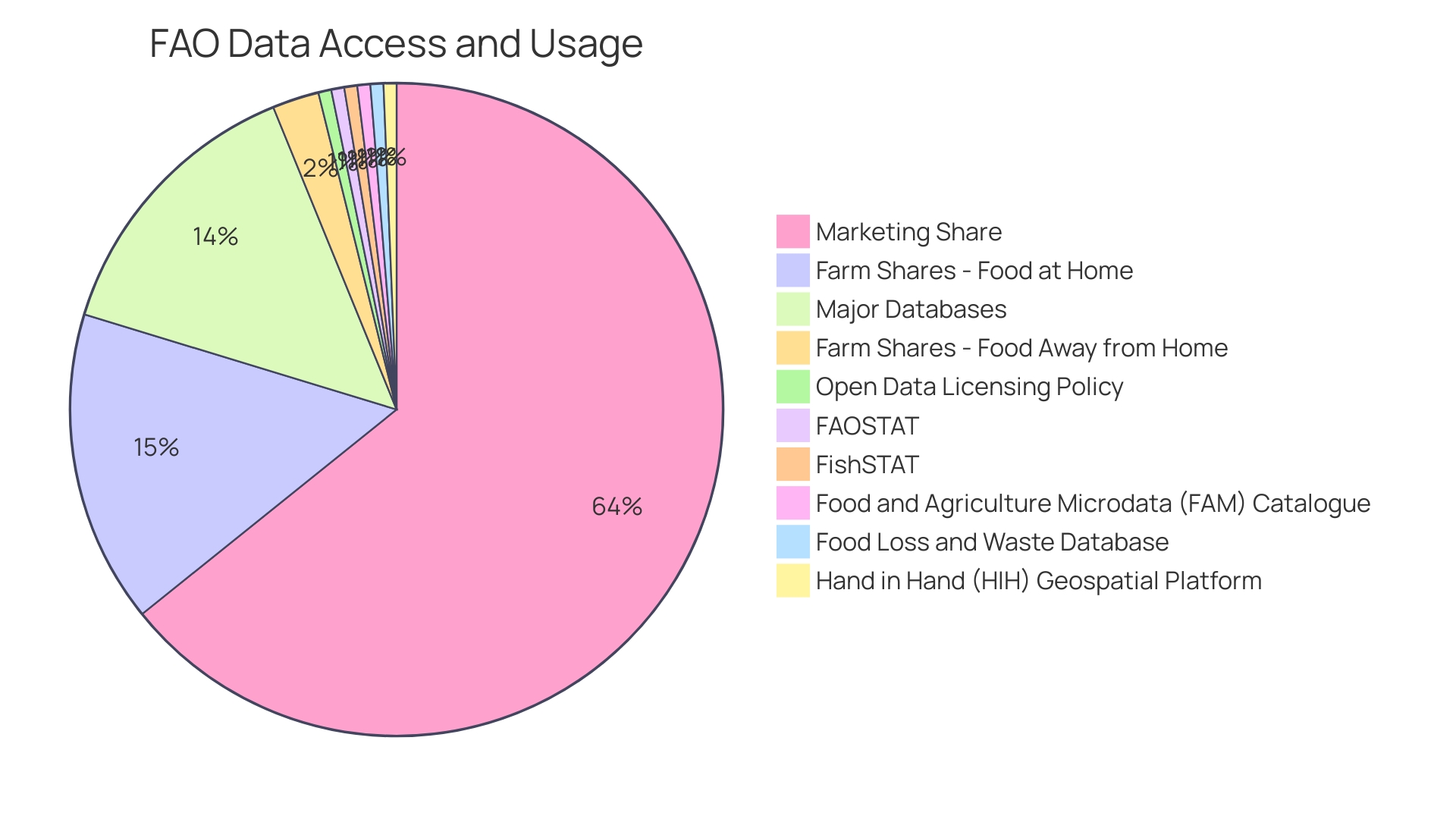
Maintenance and safety
Prioritizing safety and efficiency is paramount when renting equipment like tillers. Before you take possession of the tiller, it's crucial to engage with the rental company regarding the machine's maintenance history and safety assurances. This is not just about ticking boxes; it's about ensuring that the tiller will function reliably and safely, minimizing the risk of unexpected downtimes or accidents.
A well-maintained tiller is a cornerstone for smooth operations, much like the vigilant upkeep of air compressors in industrial settings can prevent unforeseen electrical hazards.
When it comes to operation, it's not enough to simply know how to turn the tiller on and off. Taking the time to understand its safety features and how to operate it correctly is akin to undergoing essential training before handling heavy-duty equipment like overhead cranes. This step is about more than just compliance; it's about taking ownership of your project's success and safety.
Moreover, staying informed about the latest advancements and services offered by rental companies can enhance your project management experience. Features like real-time tracking of running hours and energy consumption, similar to those provided by Atlas Copco Rental's I-Rent platform, can offer valuable insights for optimizing your rental equipment's use.
Remember, effective use of rental equipment is not only about getting through the job at hand but also about foreseeing and preventing potential issues. It's about learning from the experiences of others, like the contingency planning between the confectionery company and Atlas Copco Rental, which can be a game-changer when unexpected needs arise.
As you prepare to rent a tiller, consider these aspects as part of your strategic approach to maximize productivity and safeguard your project against potential setbacks.
Tips for Maximizing Efficiency with a Rented Tiller
Optimizing the use of rented tillers is crucial for enhancing productivity in agricultural projects. Reflecting on the agricultural industry's challenge of meeting the demand of a growing population with fewer labor resources, it's evident that effective tool utilization is imperative. To address this, consider incorporating autonomous technology, akin to the solutions used in factory production lines for over a century, to streamline operations and reduce reliance on manual labor.
Understanding that nitrogen application is a significant cost for farmers and that up to 50% of synthetic nitrogen may not be absorbed by crops, it's vital to ensure that your tiller is used in a manner that maximizes nutrient uptake. This could involve strategic planning of tillage based on weather patterns and soil conditions to optimize nitrogen efficiency.
Moreover, the adoption of smart technology, like smart home systems, can be translated into agricultural practices. Implementing precision agriculture tools that can automate routine tasks, such as soil monitoring, can further enhance the efficiency of your tiller use.
In the context of property management, the integration of technology, such as high-tech lock systems and property management apps, has been shown to save time and improve security. Similarly, employing sophisticated tracking and scheduling systems can assist farmers in managing their equipment rental schedules, ensuring that tillers are used at optimal times without overlap or downtime.
Finally, staying abreast of industry trends, like the shift towards unionization and its impact on labor availability and costs, can inform decisions on when and how to rent additional equipment. By staying informed and adaptable, farmers can make the most of their rented tillers, turning potential obstacles into opportunities for increased productivity.
Plan and prepare
Prior to firing up your rented telescopic handler or any heavy machinery, it's crucial to have your work zone fully prepped. You'll need to eliminate any obstacles that could get in the way, lay out clear boundary lines, and pinpoint all underground utilities or cables to avoid any costly mistakes or safety hazards. By doing so, you not only ensure a smooth operation but also boost your efficiency, allowing you to tackle more tasks with greater precision and less downtime.
Remember, careful preparation is the key to maximizing productivity with rented tools and machinery.
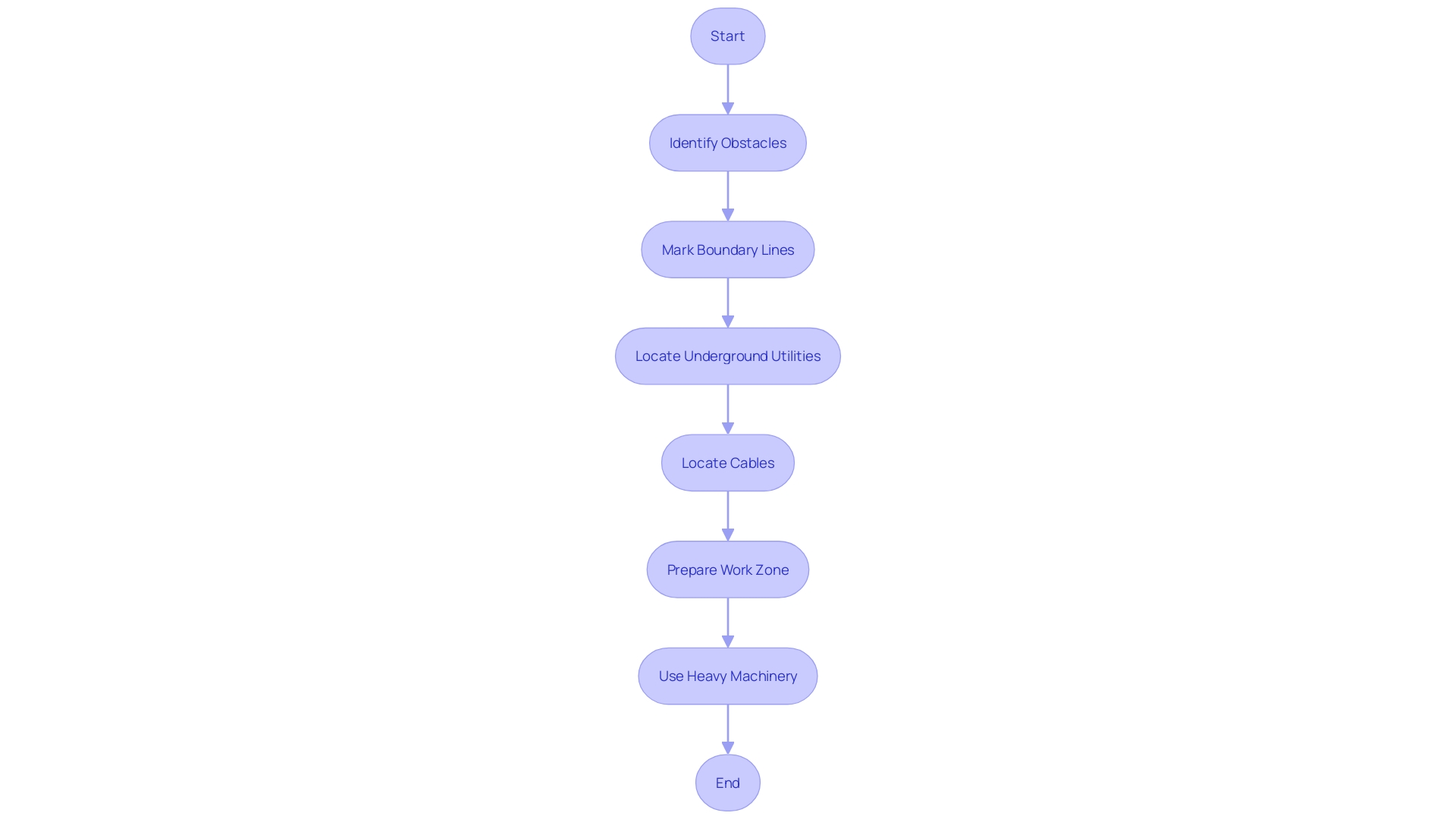
Adjust the tiller settings
To enhance the productivity of your agricultural projects, it's crucial to fine-tune machinery settings to match the specific requirements of each task. For instance, when preparing land with a tiller, adjusting the machine's depth and operational speed is vital to cater to varying soil conditions and achieve the necessary cultivation depth. Utilizing insights from recent research, which shows that up to 50% of nitrogen applied to crops is not used by the plants, optimizing equipment settings can also contribute to more efficient resource use, potentially lowering costs and environmental impact.
Innovative companies like Atlas AI are leveraging satellite imagery to inform equipment deployment, such as tractors, based on real-time data and historical trends. By adopting similar data-driven approaches, you can ensure that machinery like tillers is used effectively, maximizing yields as seen in maize production strategies where increased planting density is pivotal.
Moreover, conservation tillage practices, which leave a significant amount of crop residue to protect the soil, are gaining traction. These methods, which include 'no-till' farming, show the importance of minimizing soil disturbance, a principle that can be applied to tiller use as well. By adjusting tiller settings to maintain soil integrity while still achieving desired outcomes, you can adhere to conservation principles, potentially reducing both private costs, like fuel and labor, and public costs related to environmental damage.
Remember, like any other business, farming benefits from dedicating a portion of the budget and time to R&D, ensuring that the rapid pace of technological advancement doesn't leave you behind. By thoughtfully adjusting your tools and machinery, you can stay ahead in the challenging but rewarding field of agriculture.
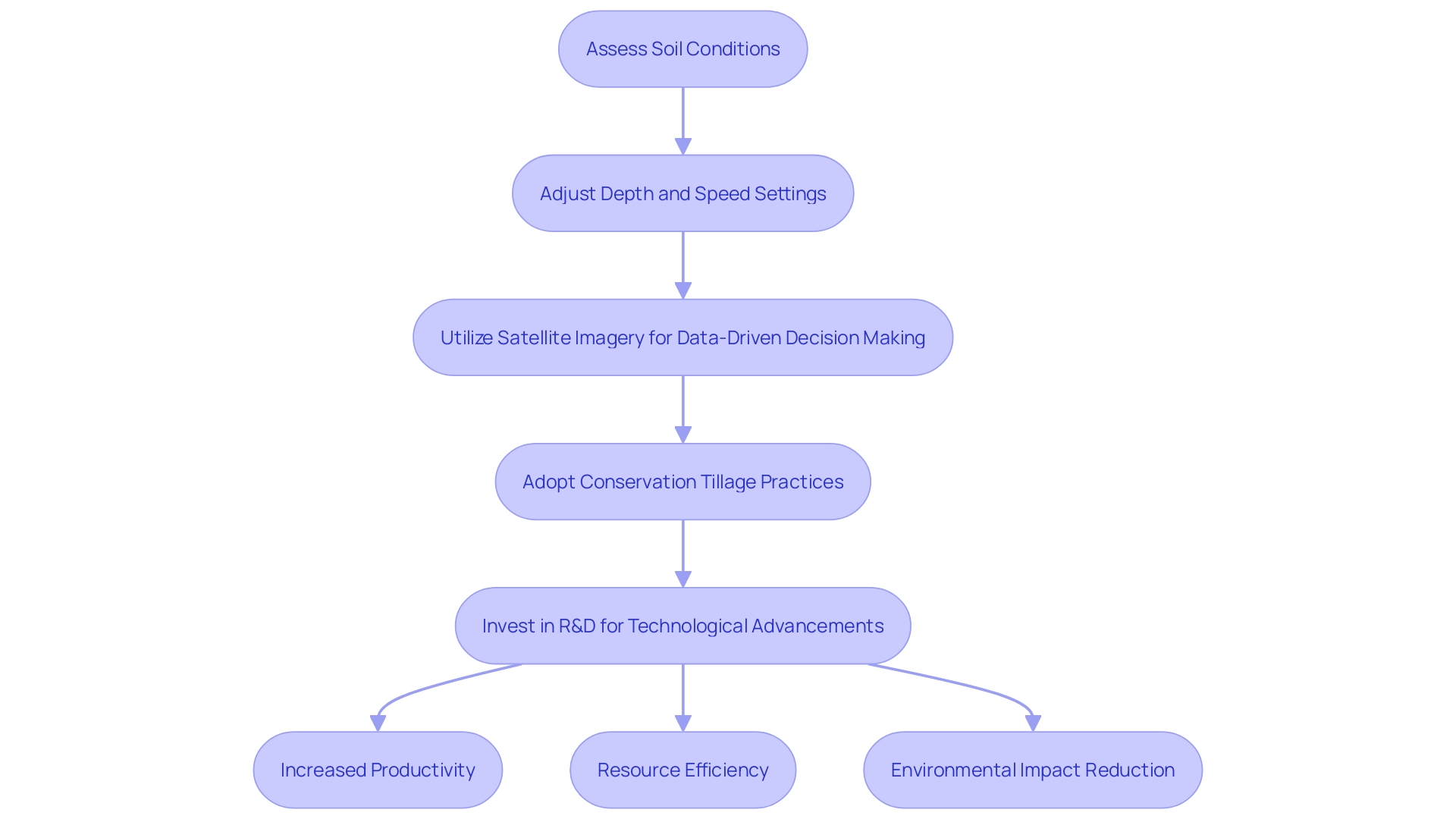
Follow proper techniques
Optimizing the use of tillers in agricultural practices is crucial for enhancing efficiency and productivity. To ensure the tiller is used effectively, it is important to adhere to recommended techniques and maintain a steady pace. Rushing the tilling process can lead to suboptimal soil preparation and even damage the equipment.
Implementing structured tilling patterns and directions can significantly improve outcomes.
For instance, in the face of a growing world population and a labor shortage in agriculture, innovative approaches like autonomous technology are revolutionizing farming practices. Companies such as Blue White Robotics have introduced autonomous kits that can be retrofitted onto existing tractors, allowing a single operator to manage an entire fleet. This technology not only addresses labor challenges but also boosts field productivity by allowing for continuous, zero-downtime operations.
Furthermore, precision in practices like pruning, which is integral for plant health and yield, mirrors the importance of precision in tilling. As gardening expert Monty Don emphasizes, using the right tools and techniques at the right time is key to successful cultivation.
The move towards conservation tillage practices showcases the potential for reducing environmental impact while maintaining productivity. Conservation tillage leaves a significant portion of crop residue on the soil surface, reducing soil disturbance and erosion. This method aligns with the findings of the Conservation Technology Information Center, which promotes residue-covered soil surfaces to protect against erosion.
It's a balance of maintaining productivity while also considering the broader environmental effects of farming practices.
Clean and return the tiller
Maintaining the quality and functionality of rented tools like tillers is crucial for their longevity and for ensuring subsequent users can rely on them for their projects. After utilizing the tiller for your needs, it is essential to thoroughly remove any accumulated debris or soil. This practice not only preserves the tiller's operational efficiency but also contributes to a sustainable cycle of use, which is particularly important in the face of global challenges such as the predicted food crisis and labor shortages in agriculture.
Cleaning the equipment before returning it is a reflection of responsible renting, aligning with the practices of leading companies that emphasize the importance of maximizing the use and lifespan of machinery. For instance, the strategic approach adopted by industrial facilities, where equipment maintenance is prioritized, demonstrates the value of treating rented tools with care. Consequently, by ensuring the tiller is returned in excellent condition, you're supporting the broader ethos of productivity and sustainability within the agriculture industry and beyond.
Common Mistakes to Avoid When Renting a Tiller
When considering the rental of a tiller for your next project, it's crucial to sidestep some common missteps to maximize productivity and avoid complications. Key pitfalls include rushing the selection process, neglecting thorough research on fair rental pricing, and bypassing the necessary checks that ensure the equipment is in top condition.
-
Rushing to Rent: Just as real estate professionals have learned that rushing to fill a vacancy is counterproductive, hastily renting a tiller without proper vetting can lead to problems down the line.
-
Ignoring Market Rates: The lawn care industry is substantial, with an estimated value of around $105.1 billion. This thriving market means that competitive rental rates are available, but it requires due diligence to identify them. Overpaying for a tiller rental can unnecessarily inflate project costs.
-
Insufficient Screening: In the real estate sector, a thorough screening process is essential for finding reliable tenants. Similarly, when renting equipment, checking the tiller's condition, maintenance history, and suitability for your specific task is equivalent to screening and can prevent future issues.
Avoiding these pitfalls will not only save time and resources but also ensure the smooth operation and success of your project.
Not considering project requirements
Selecting the correct tool or machinery for your project is essential for maximizing productivity and efficiency. This process begins with a thorough analysis of your project's specific needs. For example, when considering a tiller for landscaping purposes, one must avoid the pitfall of choosing a model that is ill-suited to the task at hand, as it can lead to wasted time and resources.
A tiller too small may not have the power necessary to break up the soil effectively, while one that is too large could prove difficult to maneuver, leading to strain on the operator and potential damage to the landscape.
Key considerations in this selection process include the project's scale and the soil's composition. The Jeju Dream Tower, for instance, stands as a testament to the importance of matching technology with project requirements. For such a grand and multifaceted establishment, the deployment of appropriate technology was paramount to its operational success.
Similarly, a tiller must be chosen with an eye towards its specific role within the project's broader objectives.
Business leaders are often cautioned against delaying necessary acquisitions, as discussed in 'How Big Things Get Done'. Waiting for external factors like market rates to drop can lead to missed opportunities. In the context of rented equipment, this translates to the importance of acting decisively, using available data to make informed choices that align with project timelines and financial constraints.
Furthermore, as highlighted by recent surveys, a staggering 70-80% of businesses still utilize spreadsheets for managing projects, despite the existence of more specialized tools. This reliance on familiar but potentially less efficient methods can be analogized to the selection of rented machinery. Utilizing the most suitable, technologically advanced tools for the job, rather than defaulting to what is convenient or familiar, can significantly enhance a project's productivity.
To sum up, the selection of rented tools and machinery should be a carefully considered decision, based on an understanding of the project's unique requirements and a strategic approach to resource management. By doing so, project managers can ensure that they are well-equipped to meet their goals efficiently and effectively.
Neglecting maintenance and safety
When using rented tools such as tillers, the key to preventing accidents and avoiding damage is to adhere to maintenance and safety protocols. The tragic story of Sebastian Mejia, who died from carbon monoxide poisoning due to a leaking water heater in his rented accommodation, starkly highlights the potential consequences of overlooked safety measures. Similarly, incidents like the accidental fire linked to an electrical appliance and cable, as confirmed by Vivid, underscore the importance of proper equipment use and maintenance.
In the industrial sector, the handling of heavy machinery requires a high level of precision and commitment to safety, as noted by Hannah Boothe. This is particularly true for equipment like overhead cranes, where insufficient training and certification can lead to costly and dangerous mistakes. As such, it is vital to ensure that all operators of rented tools and machinery are adequately trained and informed about the equipment's safety features.
Moreover, recent discussions on social media platforms like Weibo about the regulation of electric bicycles, which have been involved in several fire incidents, call for more proactive measures. This reflects the broader need for safety-focused management of all types of equipment, rented or owned.
Finally, tool-shares and tool libraries present an alternative to traditional rental services, offering a cost-effective and community-driven solution for accessing tools. However, regardless of the source of the rented equipment, it is crucial to understand the costs involved and to select the appropriate item for the job at hand, as highlighted by Mansur's estimation of rental costs for basic power tools.
To conclude, whether you are renting a tiller for a day or borrowing equipment from a local tool library, always prioritize safety and maintenance, and remember that the upfront cost of renting can save you from the much higher price of a preventable disaster.
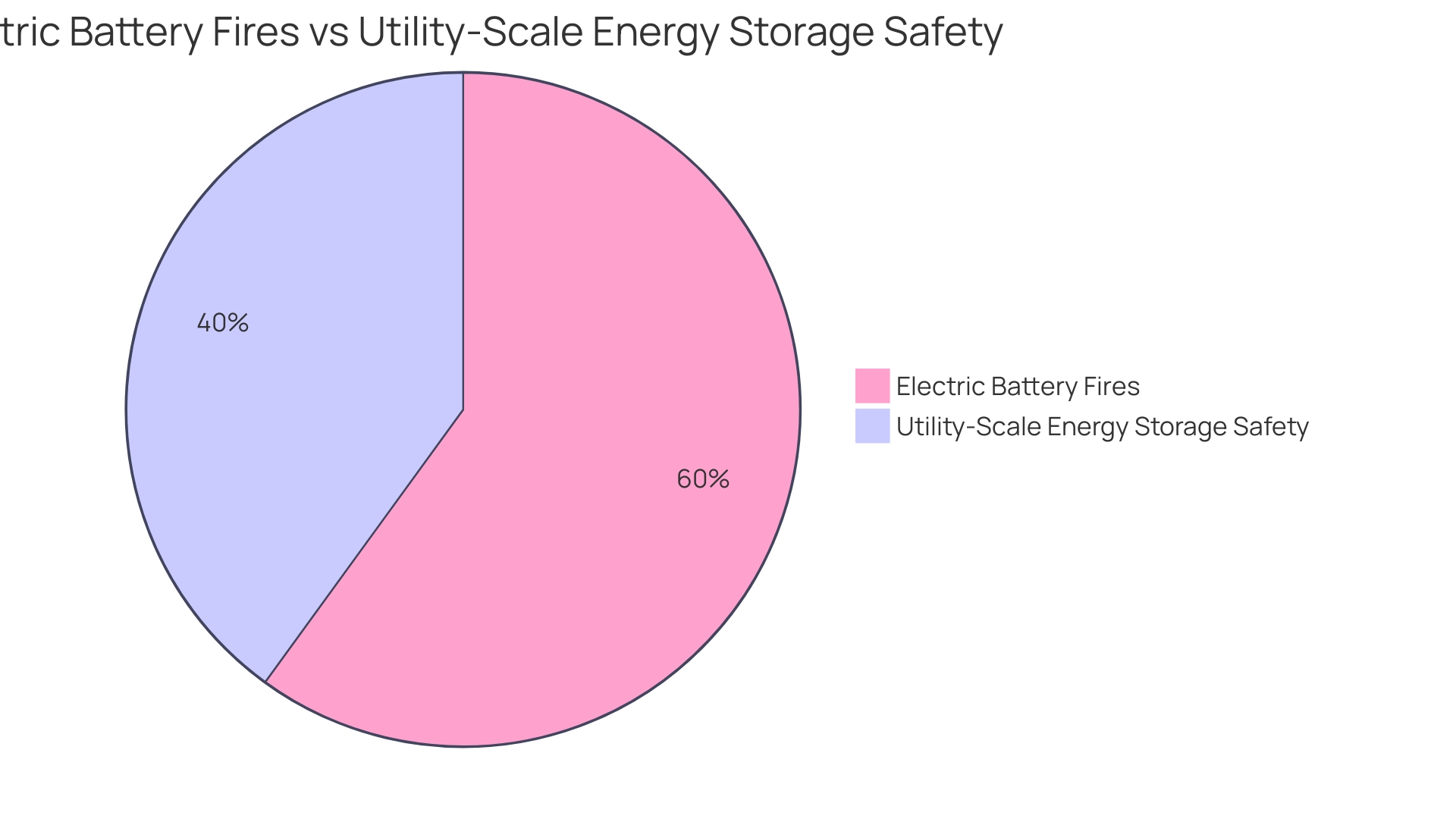
Overestimating your capabilities
Operating a rented tiller without the proper know-how can lead to less-than-ideal outcomes or worse, personal harm. As the Occupational Safety and Health Administration's training emphasizes, safety begins with hazard elimination. If you're not entirely confident in your tilling abilities, it's wise to consider professional training or assistance to avoid the risks associated with inexperience.
Remember, the upfront investment in understanding how to use the equipment can prevent costly mistakes and ensure a safe, efficient operation. This proactive approach aligns with safety best practices, which prioritize hazard elimination and mitigation before relying on personal protective equipment as a last line of defense. Ensuring you're adequately trained not only safeguards your well-being but also guarantees that the tool is used to its full potential, thereby maximizing productivity on your projects.
Maintenance and Safety Considerations
Understanding the intricate interplay between technology and agriculture is critical, especially as we face a mounting global food crisis and labor shortages. The implementation of autonomous technology, such as vehicle-agnostic kits equipped with cutting-edge cameras, GPS, and LiDAR sensors, is revolutionizing farming. These technologies enable a single operator to manage a fleet of tractors seamlessly, ushering in an era of zero-downtime operations and significantly boosting productivity.
In the realm of heavy machinery and equipment, proper handling is paramount for operational efficiency and safety. Insufficient training and certification of operators can lead to costly mistakes. It's essential that those operating machinery like rented tillers are well-versed with the equipment, its functions, and safety protocols.
Continuous learning and professional development, through workshops and industry events, are key to staying abreast of the latest advancements and safety standards.
Moreover, the importance of safety in handling heavy equipment cannot be overstated. With the agricultural sector playing a vital role in the global economy and food supply, the integration of autonomous solutions into farming practices is not only a step towards resolving labor crises but also a strategic move to combat future food scarcity issues. By embracing these autonomous solutions, operators can ensure the safe, efficient, and productive use of rented tillers and other agricultural machinery.
Regular cleaning
To maintain the peak performance of your tiller and extend its operational life, meticulous cleaning is essential after every use. This process removes dirt, debris, and plant material that can hinder the functionality of the tiller's blades, tines, and moving parts. By preventing obstructions and keeping these components clean, you're not only ensuring efficient operation but also contributing to sustainable agriculture practices.
Such diligence aligns with the innovative approaches of enterprises like Dyson Farming, which focus on high-technology agriculture in harmony with the environment. Moreover, this practice supports soil health, which is paramount as it plays a role in carbon sequestration and resilience to extreme weather, essential factors in the ongoing battle against climate change and ensuring food security for the growing global population.
Lubrication and inspection
To sustain agricultural productivity in the face of a growing population and labor shortages, it's essential to utilize tools and machinery effectively. This includes the meticulous maintenance of equipment like tillers, which are vital in preparing the land for planting. Ensuring these machines are well-lubricated according to manufacturer recommendations helps maintain their functionality and longevity.
Regular inspections for wear, damage, and critical checks on engine oil level, air filters, and spark plugs are not mere suggestions but a proactive approach towards preventative maintenance. As highlighted in industry reports, high-quality lubricants can lead to significant waste reduction by remaining effective for longer periods, thus reducing overall consumption. This practice not only optimizes machinery performance but also aligns with sustainability goals by conserving resources and promoting safety.
In the broader scope of motion and control technologies, companies like Parker are engineering solutions to make operations cleaner and more efficient. By keeping detailed logbooks, as advised for industrial air compressors, performance metrics can be monitored to prevent breakdowns and extend equipment life. This level of diligence in maintenance is a small but powerful contribution towards addressing global food production challenges, ensuring that every piece of machinery operates at its best to support the crucial task of feeding the world.
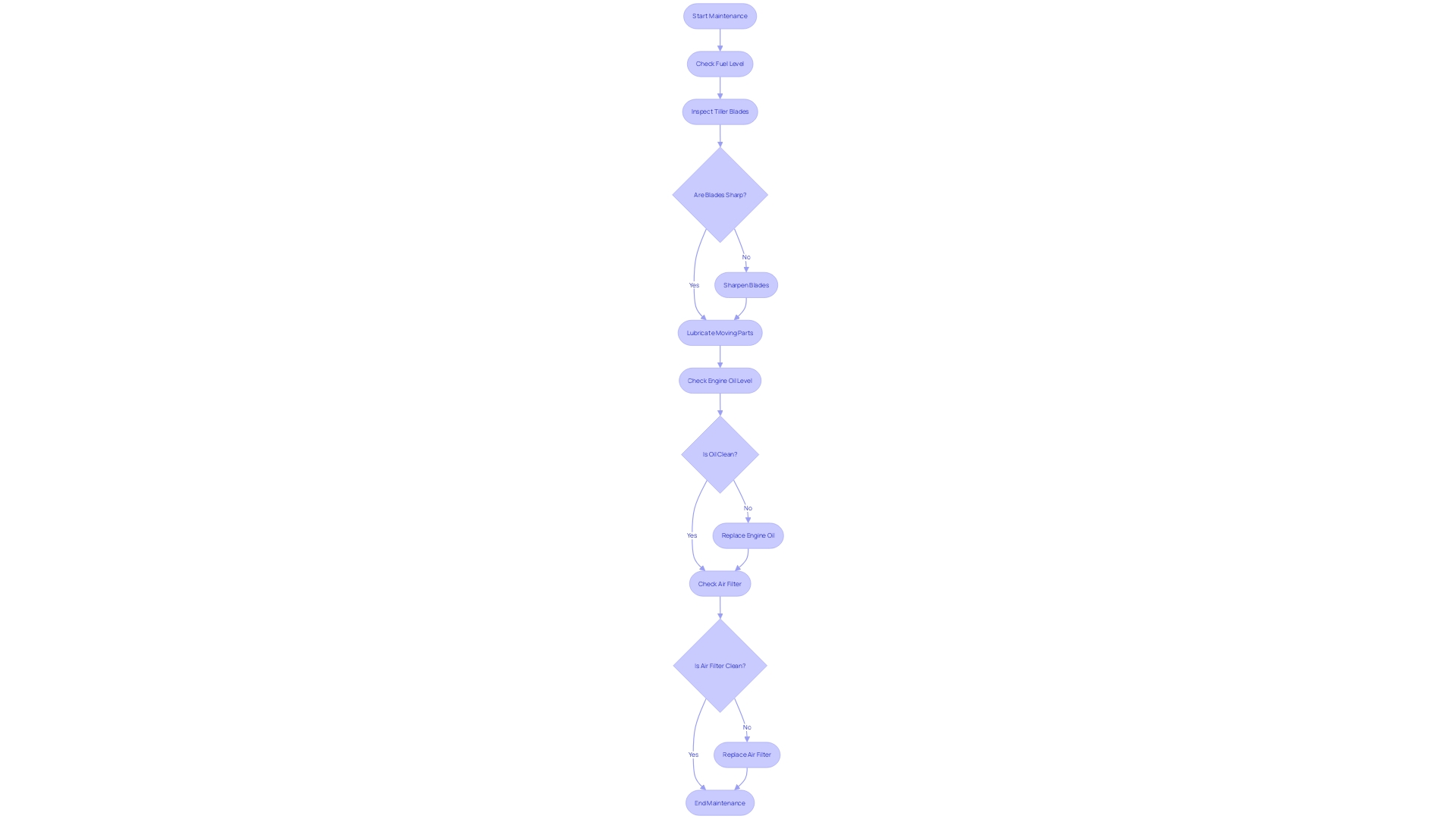
Safety precautions
Handling a rented tiller requires more than just the physical ability to operate the machine; it necessitates a commitment to safety and a thorough understanding of the equipment. Before commencing work, equip yourself with essential safety gear including goggles, gloves, and durable footwear to protect against accidents. Take the time to acquaint yourself with the tiller's emergency stop mechanisms to ensure you can quickly deactivate the machine in case of an emergency.
Adherence to the rental company's safety instructions is not optional but imperative for your safety and those around you.
The significance of safety is echoed by industry experts who emphasize the need for comprehensive training and understanding of heavy machinery. As underscored by Hannah Boothe, the intersection of heavy lifting and meticulous control requires strict adherence to best practices in equipment handling. Insufficient training and certification are noted as primary errors that can lead to severe consequences, both for operational efficiency and workplace safety.
Moreover, the latest statistics reveal that while the majority of truck accidents may not lead to fatalities or injuries, a substantial number still result in property damage or harm to individuals. This underlines the importance of safety measures and informed operation, not just for trucks but for all heavy machinery including rented tillers. By prioritizing education, proper equipment handling, and safety protocols, operators can mitigate risks and contribute to a safer working environment.
Conclusion
Renting a tiller offers significant benefits for agricultural projects. It eliminates the need for a hefty initial investment, provides flexibility to choose up-to-date models, and addresses the market gap for temporary equipment usage. Expert advice and ongoing support ensure users have efficient and effective tillers, optimizing productivity and saving costs.
Renting a tiller contributes to a sustainable approach in the agricultural sector.
By incorporating edimentals and staying informed about technological advancements and market trends, users can enhance garden design, lower maintenance, and make smart decisions for profitable farming. Efficient irrigation integration and adjusting tiller settings further optimize resource use. Following proper techniques and practices, such as structured tilling patterns, improves outcomes.
Thoroughly cleaning and returning the tiller in excellent condition supports sustainability efforts and ensures reliable equipment for subsequent users. Avoiding common mistakes, seeking professional training if needed, and prioritizing maintenance and safety are crucial.
By following safety precautions and recommended practices, users can effectively utilize rented tillers, maximize productivity, and contribute to a safer working environment. Renting a tiller provides a practical and economical option for temporary equipment needs, offering a sustainable solution in a fast-paced world.




